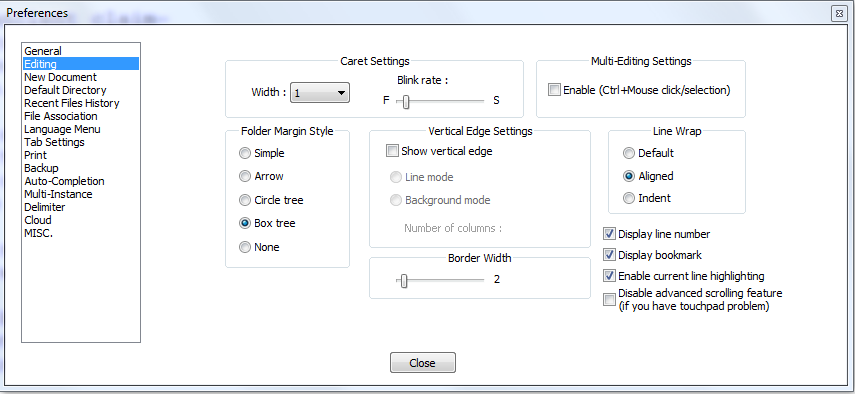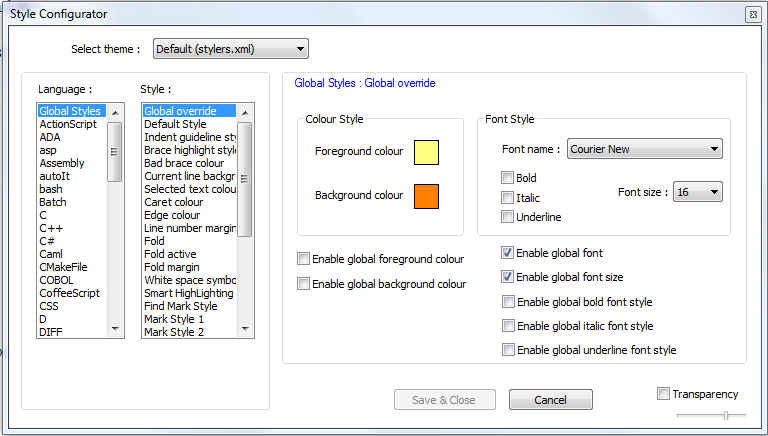Get Ahead and Prepare for First Semester
Welcome to Mohawk College. Before you begin first semester in the Computer Science and Information Technology department you can familiarize yourself with the software tools you will be using when school starts. This is not a requirement. We provide this information for those who wish to explore and experiment on their own before classes start.
College classroom PC configuration
If you are shopping for a new PC, you may find the below helpful.
- General Purpose Classroom PC
- Windows 10.
- 16 GB of RAM.
- The chipset should support virtualization. If it is an Intel product it will say VT-x in the specs.
- We use Apps Anywhere in College PC labs to run many software titles.
Install Notepad++ editor
- This editor is used in first semester CO710 HTML & CSS. We require direct editing raw html tags and css rules in a plain text editor like Notepad++ over any of the more sophisticated web page development tools you may be aware of.
- Download Notepad++ and install. The first option in the download list of links will use the Microsoft installer to manage the installation for you.
- When you run Notepad++ you can customize many features via the toolbar Settings - Preferences. For example, click on Editing and select Display Line Numbers to turn that feature on if it is not on already.

- Font family, colours and sizes are defined under Settings - Style Configurator. If you want these settings to apply to all documents you create be sure to select the Enable Global font and Enable Global font size check boxes.

Experiment a bit with these settings to see what suits you.
Install Chrome browser
- Download Chrome browser and install.
- When you are developing web pages it is a good idea to test in more than one browser. You should have an up to date copy of all the popular browsers on your PC. You will use this in CO710 HTML & CSS in first semester.
Install Firefox browser
- Download Firefox browser and install.
- This browser will be used in CO710 HTML & CSS in first semester.
HTML & CSS tutorials
- Now that you have Notepad++ and at least two browsers on your PC you are ready to create some web pages and explore HTML and Cascading Style Sheets (CSS).
- The tutorials at w3schools are an excellent example of the topics we will be investigating in CO710 HTML & CSS in first semester. This website offers Certifications which cost money, you are not required to do any Certifications here. You can study for free.
- On the left side of the page click Learn HTML.
- We are only concerned with HTML 5 and CSS 3. A general rule to remember: make sure you are reading the version of documentation that applies to the technology you are working with.
- The first block of tutorials listed down the left side of this page under HTML Home are all valid except for IFrames and JavaScript. Those topics are not included in CO710.
- Don't feel pressured to do all those tutorials, just do a few. That list represents most of the course CO710. It is better to just do a few tutorials and really experiment with the code than trying to plow though too much content too quickly. Take your time. Be sure to use the 'Try it yourself' links on that website.
- To help you get started here is a skeleton webpage you can use as a starting point for any web page you create in the future. skeleton.html Open this file, right click with mouse and select 'view page source'. Pressing CTRL+a on your keyboard will select all the text. Pressing CTRL+c on your keyboard will copy all the selected text to the Windows clipboard. Open Notepad++, make sure the focus is set in a new document and press CRTL+v to paste that text into your editor. Save this file and name it skeleton.html.
- Edit skeleton.html in Notepad++. In the comment section at the top of the file insert your name and student number. Save this file and close it.
- At the Operating System level (Windows Explorer) copy this file to another file named tutorialOne.html.
- View this local html file in a browser. There are several ways to do this. For example in Notepad++ you can select Run from the menu and hit Launch in Chrome. You could also double click on the filename in Windows Explorer and the default browser for your Operating System would open the file.
- It is also worth looking at the CSS Tutorials. All the tutorials are relevant to our course but it is not necessary to try and do all of them. Experiment with a few and just try to get a handle on what you are getting into.
- This is a very large topic and it will take a lot of time to become an expert. Creating web pages is visually pleasing work and can be a lot of fun.
Programming Fundamentals
- You will be learning the Python programming language in first semester.
- Try the Beginner Tutorials at the website above. Experiment and have fun with the code.
Introduction to Networking
Over the course of the Networking programs, students will require a USB portable hard drive, and we feel it’s a good idea to get into the habit of using it right away.
We recommend a solid-state (SSD) drive with a minimum size of 500GB and a minimum read speed of 500 MB/s. The drive should be USB powered only – nothing that requires an external AC power source – and be USB 3.1 Gen 2 or better, with the ability to connect to a USB Type-A port on any computer.
Students have had luck with models such as the Samsung Portable SSD T5 and T7, but any comparable drive should suffice. We have noted an above-average number of problems and failures with ADATA and RAOYI drives, so we recommend avoiding those brands.
Look for sales and “back to school” promotions – you don’t need them on the first day of classes, and taking advantage of a good sale during the first week or two of the term is sure to save you a lot of money. Expect to spend between $100 and $300 for a suitable drive (depending on the size and performance you choose).
First Semester Math
- The recommended calculator is a Sharp ELW516XGBSL Write View 422 Function 16 Digit Scientific Calculator.
- Your first-semester math classes will begin with a treatment of numbers systems and logical decision making in mathematics. You may find it beneficial to review the basics of numbers systems in the tutorials below
- Binary and other number systems (the basics)
- Rules for Operating in Binary and practical implications for computer science
- Once registered in the first-semester math course, you have a chance to review some of the fundamental math concepts by completing the MathZone even before classes start.

MathZone includes four short modules, where you receive academic math instruction via narrative interactives explaining different mathematical concepts. After completing the modules you can take the MathZone Test (multiple attempts allowed). By successfully completing the test, you will also attain a percent grade towards a later examination in MATH10042.
More information on how to access MathZone can be found in MyCanvas once you register for the course.
If you have any questions or concerns, please email the course coordinator: frosina.stojanovska-pocuca [at] mohawkcollege.ca (frosina[dot]stojanovska-pocuca[at]mohawkcollege[dot]ca)
If you have general questions about life at Mohawk College, please visit contact page.

